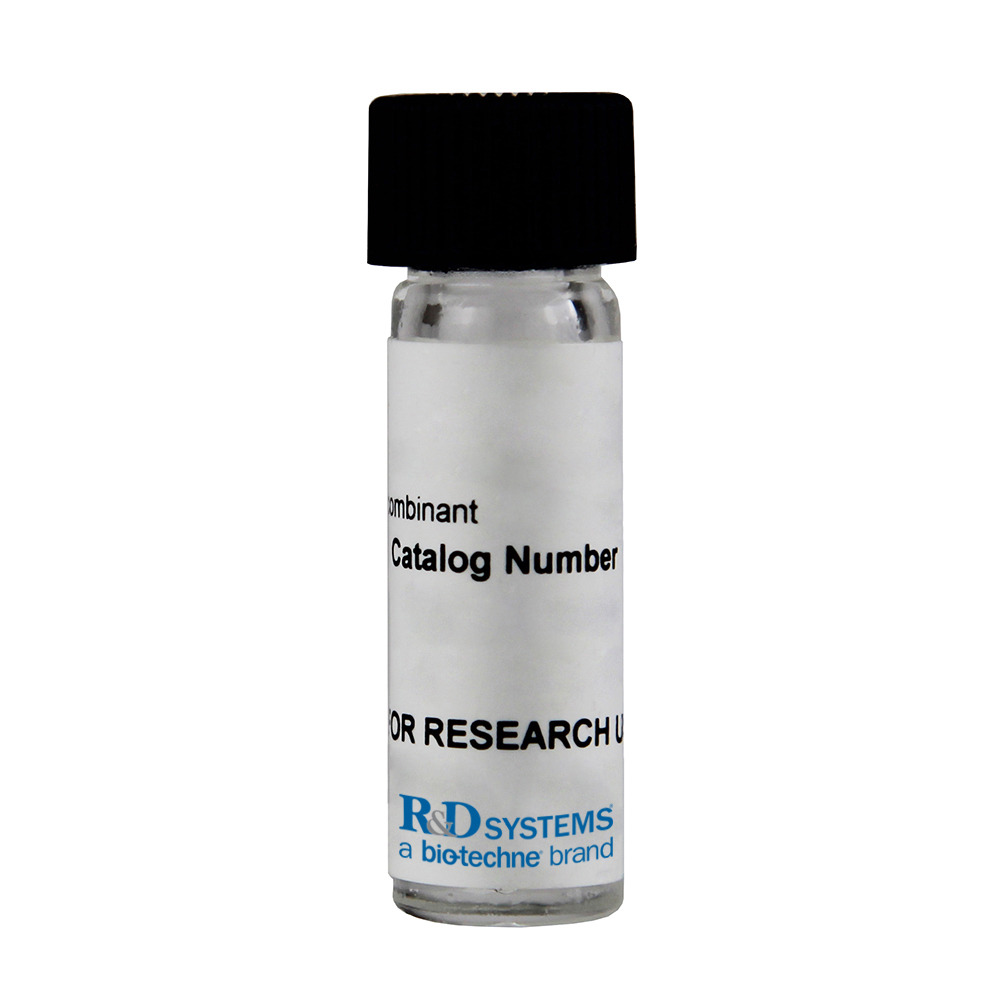 全部商品分类
全部商品分类

 下载产品说明书
下载产品说明书 下载SDS
下载SDS 用小程序,查商品更便捷
用小程序,查商品更便捷


 收藏
收藏
 对比
对比 咨询
咨询Carrier Free
CF stands for Carrier Free (CF). We typically add Bovine Serum Albumin (BSA) as a carrier protein to our recombinant proteins. Adding a carrier protein enhances protein stability, increases shelf-life, and allows the recombinant protein to be stored at a more dilute concentration. The carrier free version does not contain BSA.
In general, we advise purchasing the recombinant protein with BSA for use in cell or tissue culture, or as an ELISA standard. In contrast, the carrier free protein is recommended for applications, in which the presence of BSA could interfere.
4858-NM
| Formulation | Supplied as a 0.2 μm filtered solution in Tris, NaCl and Glycerol. |
| Shipping | The product is shipped with polar packs. Upon receipt, store it immediately at the temperature recommended below. |
| Stability & Storage: | Use a manual defrost freezer and avoid repeated freeze-thaw cycles.
|
Recombinant Influenza A Virus H1N1 Neuraminidase Protein, CF Summary
Product Specifications
Ser37-Lys469, with an N-terminal 6-His tag
Analysis

Background: Viral Neuraminidase
Neuraminidase (NA) and hemagglutinin (HA) are major membrane glycoproteins found on the surface of influenza virus. HA is a lectin that binds sialic acid on host cell membrane. NA is a sialic acid hydrolase that specifically clips off terminally located sialic acid on host cell surface. The two proteins are essential for the infectious cycle of the influenza virus. During initial infection, an influenza virus will hold onto an epithelial cell through HA-sialic acid interaction. At the end of an infectious cycle, the NA will cleave the sialic acid on the host cell membrane, releasing the formed viral particle from the HA-sialic acid bondage (1). The neuraminidase activity is also thought to help the virus penetrate mucus. Nine subtypes of NA have been identified, all of which are tetrameric and share a common structure consisting of a globular head, a thin stalk region, and a small hydrophobic region that anchors the protein in the virus membrane (2). The purified rvH1N1NA consists of amino acid residues 37 to 469 as deduced from the 1918 Spanish flu virus NA (A/Bervig_Mission/1/18) (3). It has a distinct N-glycan profile and is resistant to trypsin digestion (4).






